I have documented my first rust repair with a series of photos (left to right) and a short explanation of each step taken.
In step one, I cleaned all the paint from the section to be repaired using a flap wheel, you can see here I also found some small dents, a wire wheel was used to remove the remainder of body filler from these.
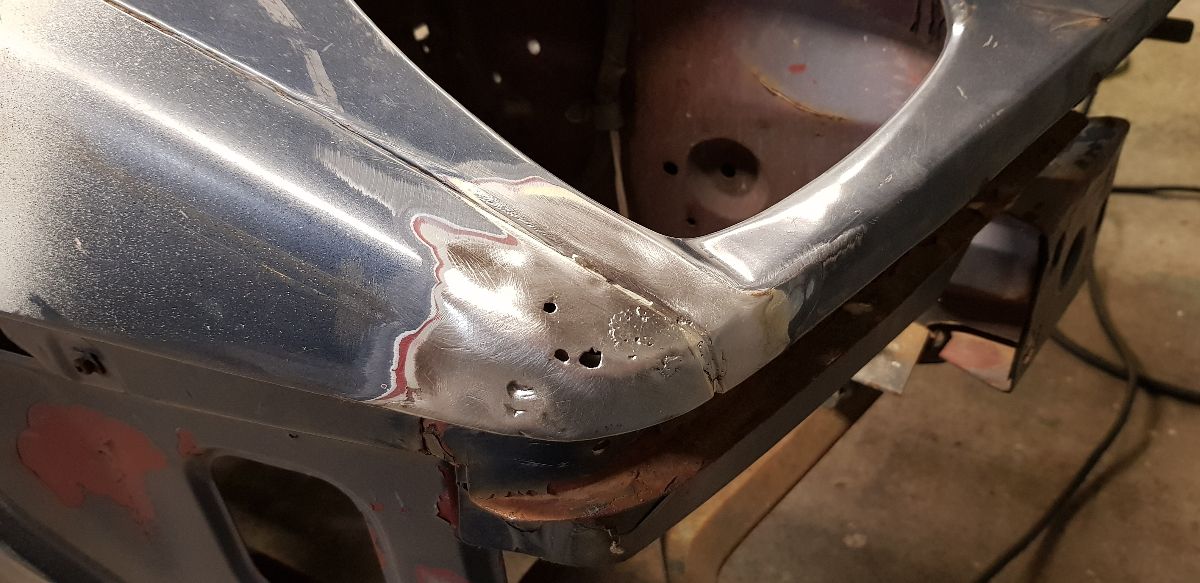
Step two and three, I cut a piece of copper pipe and bent it into shape roughly so that it can be lodged inside the panel. This is held in place by a strong magnet. You can see the copper behind the holes here. The principle is that the copper which has a much higher melting temperature than the steel being welded will stop large blobs of molten steel from falling away from the weld (resulting in blowout).
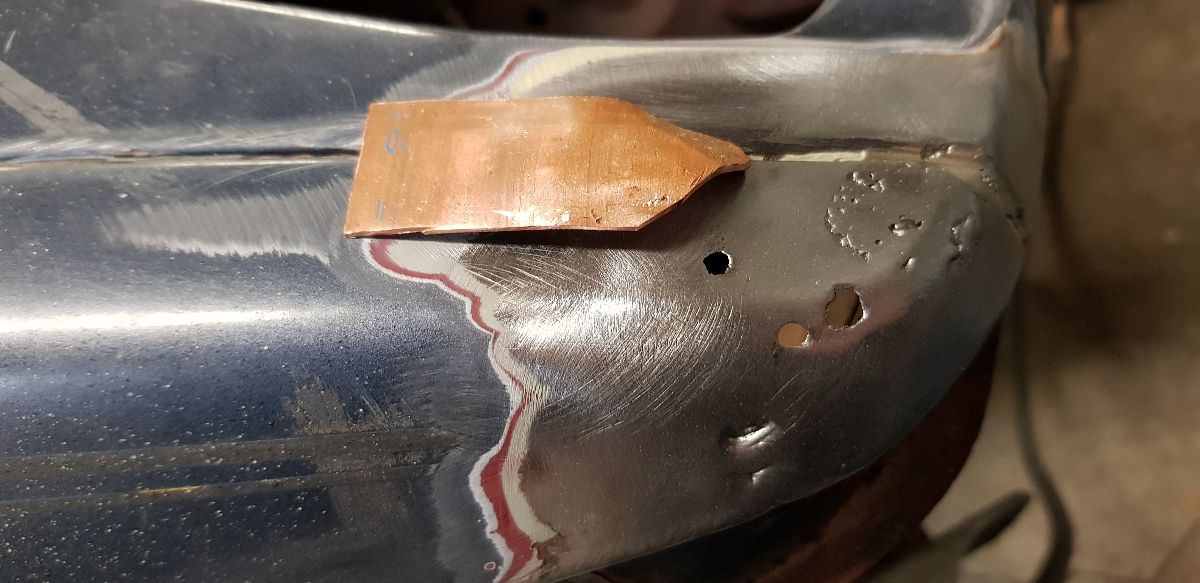

Step four, I welded the holes. Using short bursts of around a second with about half a second in between them to slowly close the holes until they where all filled. I think there is room here for me to fine tune my welder settings and technique but the result is as good as I have expected having little welding experience.
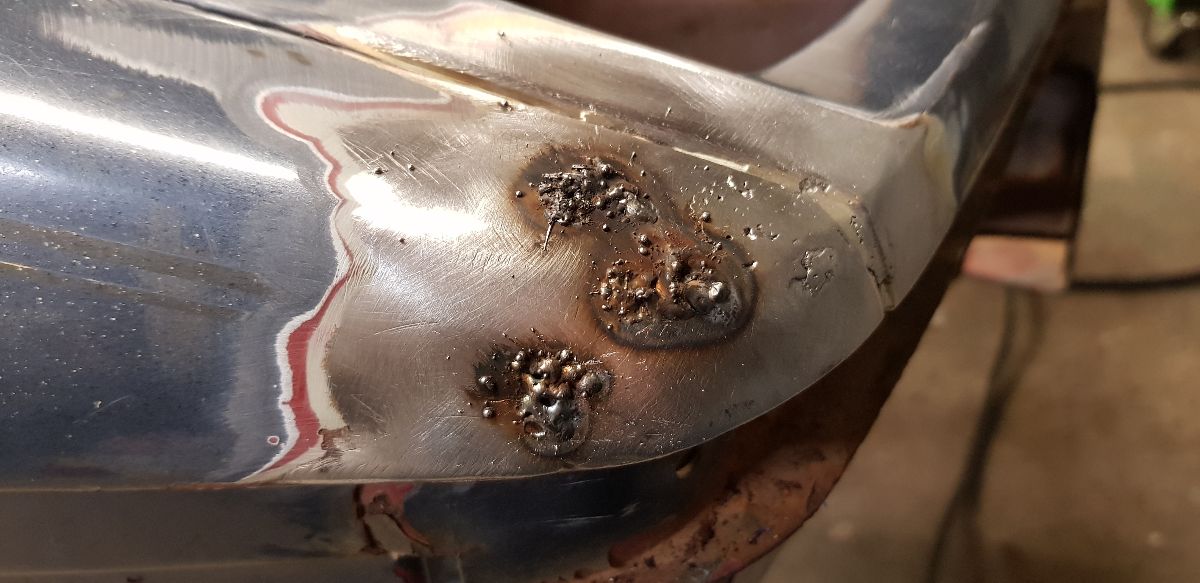
In step five, I removed all the excess material created while welding with a grinder and took out the copper backing. I shone a torch through from inside the panel to ensure there are no pinholes.
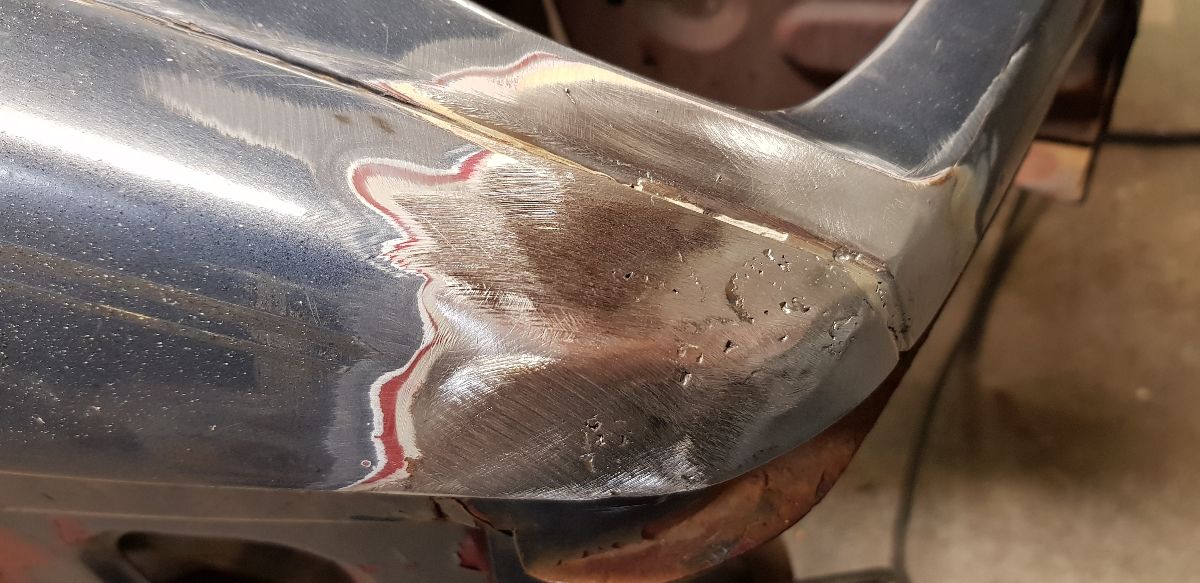
Step six, I applied body filler and let it harden then in step seven, I used an orbital sander to remove the excess. Finally, I sprayed some etch primer to the bare metal surface to protect it from rust for the time being until paint preparation can begin.
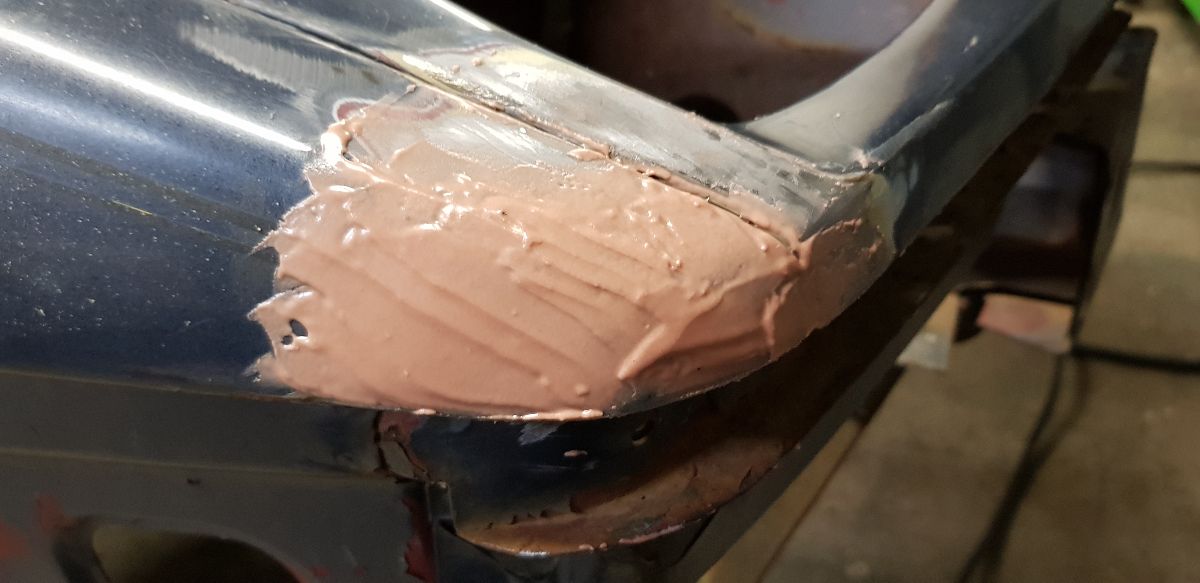
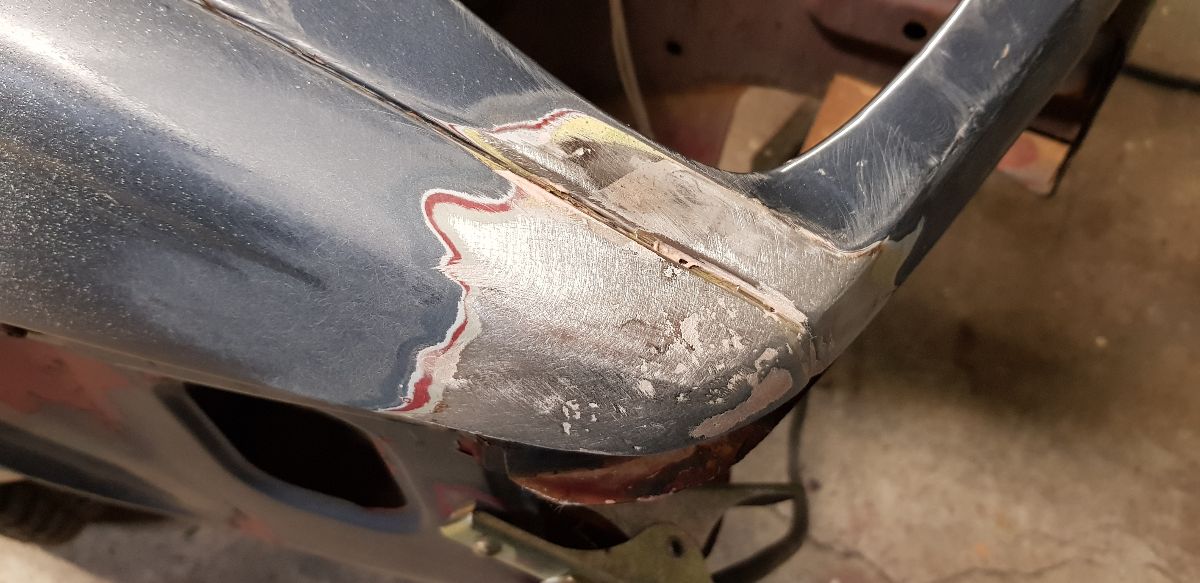
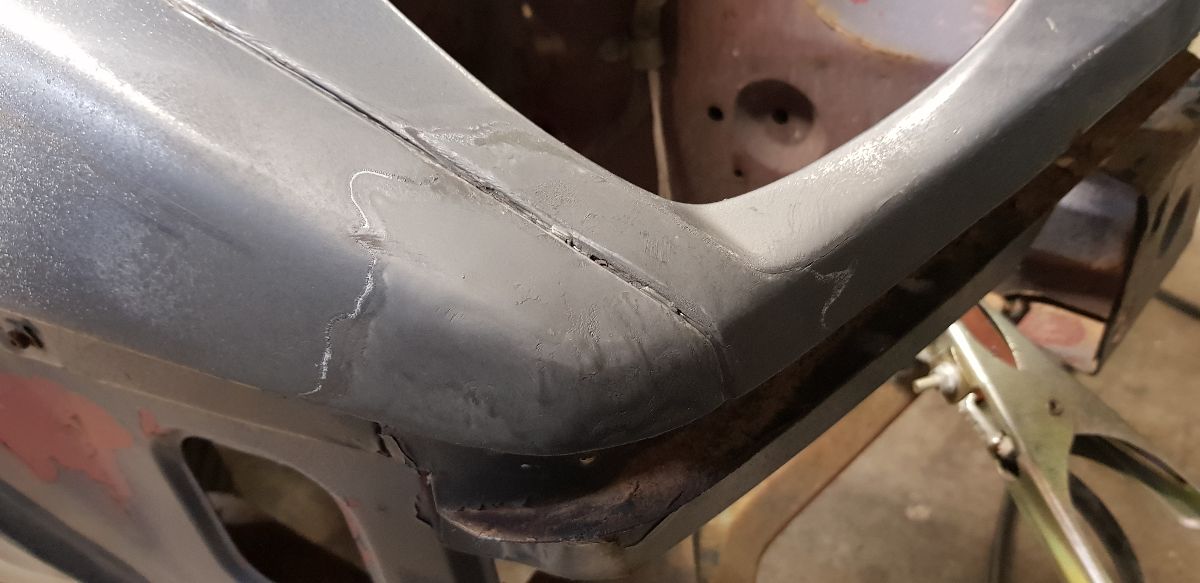
The process has been quite enjoyable and fortunately this project car is very rust free for a 40 year old British car, so I will soon be able to focus on the mechanical aspects of the restoration. I am however thankful for the opportunity to be learning a new skill.

Recent Comments